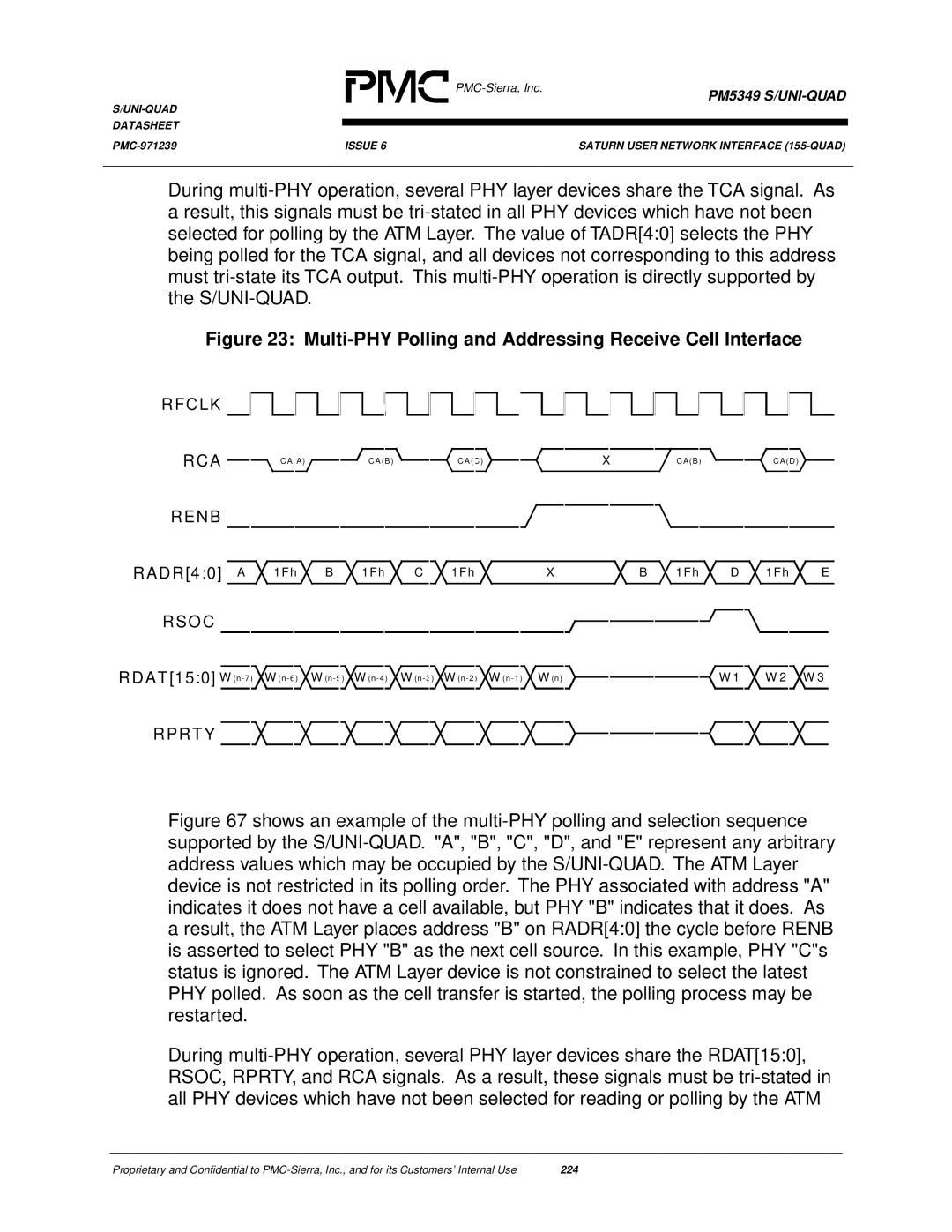
DATASHEET
PM5349 S/UNI-QUAD
ISSUE 6 | SATURN USER NETWORK INTERFACE | |
|
|
|
During
Figure 23: Multi-PHY Polling and Addressing Receive Cell Interface
RFCLK
RCA |
|
| CA(A) |
|
| CA(B) |
|
| CA(C) |
|
|
|
| X |
| CA(B) |
|
| CA(D) |
|
|
| |||||||||||
|
|
|
|
|
|
|
|
|
|
|
|
|
|
| |||||||||||||||||||
RENB |
|
|
|
|
|
|
|
|
|
|
|
|
|
|
|
|
|
|
|
|
|
|
|
|
|
|
|
|
|
|
| ||
|
|
|
|
|
|
|
|
|
|
|
|
|
|
|
|
|
|
|
|
|
|
|
|
|
|
|
|
|
| ||||
|
|
|
|
|
|
|
|
|
|
|
|
|
|
|
|
|
|
|
|
|
|
|
|
|
|
|
| ||||||
RADR[4:0] A | 1Fh | B |
| 1Fh | C |
| 1Fh | X |
|
|
| B |
| 1Fh D | 1Fh |
| E | ||||||||||||||||
RSOC |
|
|
|
|
|
|
|
|
|
|
|
|
|
|
|
|
|
|
|
|
|
|
|
|
|
|
|
|
|
|
|
|
|
|
|
|
|
|
|
|
|
|
|
|
|
|
|
|
|
|
|
|
|
|
|
|
|
|
|
|
|
|
| ||||
|
|
|
|
|
|
|
|
|
|
|
|
|
|
|
|
|
|
|
|
|
|
|
|
|
|
|
|
|
| ||||
|
|
|
|
|
|
|
|
|
|
|
|
|
|
|
|
|
|
|
|
|
|
|
|
|
|
|
|
|
|
|
|
|
|
RDAT[15:0] W | W | W | W | W | W | W (n) |
|
|
|
|
|
|
|
| W 1 | W 2 | W 3 | ||||||||||||||||
|
|
|
|
|
|
|
| ||||||||||||||||||||||||||
|
|
|
|
|
|
|
|
|
|
|
|
|
|
|
|
|
|
|
|
|
|
|
|
|
|
|
|
|
|
|
|
|
|
RPRTY
Figure 67 shows an example of the multi-PHY polling and selection sequence supported by the S/UNI-QUAD. "A", "B", "C", "D", and "E" represent any arbitrary address values which may be occupied by the S/UNI-QUAD. The ATM Layer device is not restricted in its polling order. The PHY associated with address "A" indicates it does not have a cell available, but PHY "B" indicates that it does. As a result, the ATM Layer places address "B" on RADR[4:0] the cycle before RENB is asserted to select PHY "B" as the next cell source. In this example, PHY "C"s status is ignored. The ATM Layer device is not constrained to select the latest PHY polled. As soon as the cell transfer is started, the polling process may be restarted.
During multi-PHY operation, several PHY layer devices share the RDAT[15:0], RSOC, RPRTY, and RCA signals. As a result, these signals must be tri-stated in all PHY devices which have not been selected for reading or polling by the ATM
Proprietary and Confidential to | 224 |
